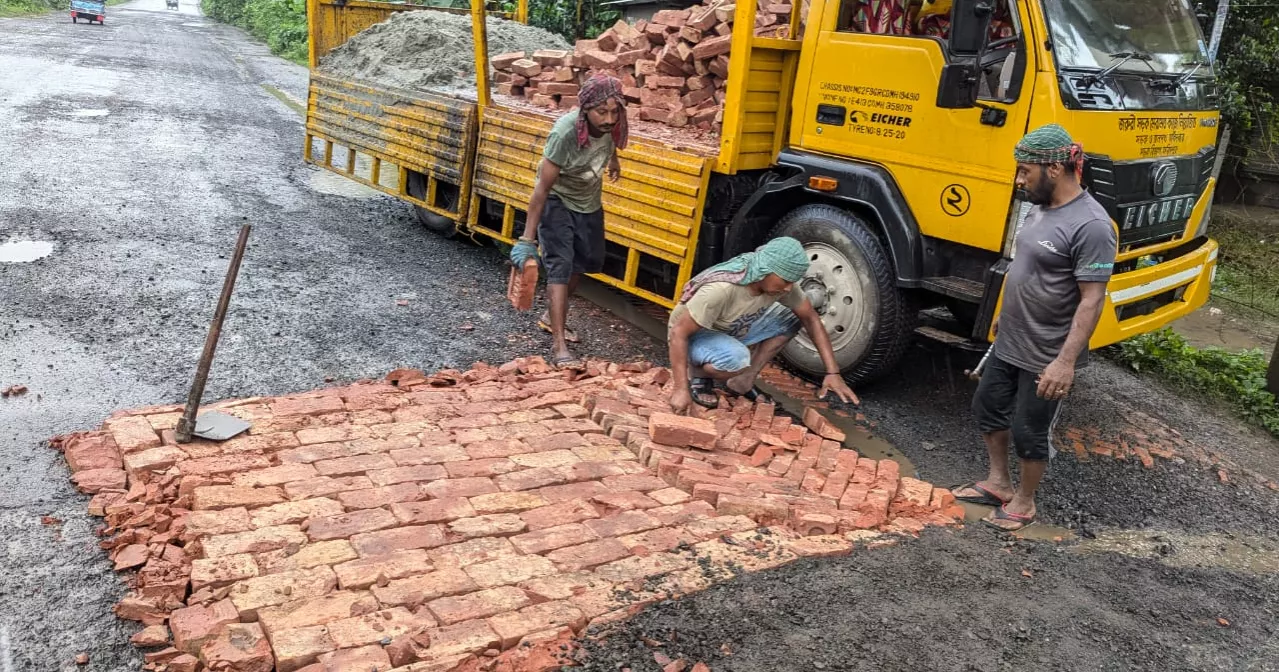For thousands of people who travel the Faridpur-Barishal highway every day, the road has long served as a lifeline — linking communities, supporting local trade, and easing travel across southern Bangladesh.
But over the past week, relentless monsoon rainfall has turned a critical 30-kilometre stretch from Faridpur town to the Bhanga intersection into a hazardous, crater-ridden obstacle course.
The scene is now one of disruption and distress. Bitumen and carpeting have peeled away in numerous areas, while gaping potholes — some as deep as five inches — have transformed the highway into a patchwork of treacherous puddles and jagged edges.
For passengers, transport workers, and traders, the once-routine journey has become an ordeal, often ending in injury or delays.
“Accidents are becoming more frequent. It’s difficult to keep balance, especially on a motorbike,” said a local commuter, navigating cautiously through the rain-drenched road near Bakhunda.
In a bid to salvage the situation, the Faridpur Roads and Highways Department (RHD) has initiated emergency repairs.
Using bricks and basic materials, teams are working on the worst-hit sections — including Pukhuria, Bhuban Dayar, Danggi Bridge, and Talma Mor — to patch over the damage temporarily.
Executive Engineer Khalid Saifullah Sardar and his team have been at the forefront of these efforts. Despite continuous rain hampering progress, they remain visible on the ground, overseeing repair operations.
“This is only a temporary solution,” Engineer Saifullah told UNB, adding, “Proper repair work can’t begin until the rain stops and land acquisition issues are resolved.”
Behind the scenes, a more ambitious plan is waiting in the wings. In late May, the government awarded a formal tender to Arabail Company for a full-scale renovation of the damaged highway. An amount of Tk 49 crore has already been allocated for immediate improvements.
Additionally, a far-reaching plan to widen the highway into four lanes has been approved, with Tk 500 crore previously sanctioned for land acquisition. But progress remains stalled.
“We can’t begin full-scale work until the district administration hands over the acquired land. That’s why there has been no major development in the Faridpur section for a long time,” Saifullah said.
Until then, the weight of the monsoon continues to bear down on the road — and on the people who depend on it.
At least 10 districts rely on this crucial artery, and its deterioration is not just a matter of inconvenience; it is disrupting livelihoods and mobility.
While the RHD has pledged to continue temporary repairs to keep the highway functional, frustration grows among road users. Many are asking why such an important route was left so vulnerable in the first place.
For now, drivers inch forward, dodging potholes and praying for clear skies and swift action to restore a road that connects more than just places — it connects lives.


